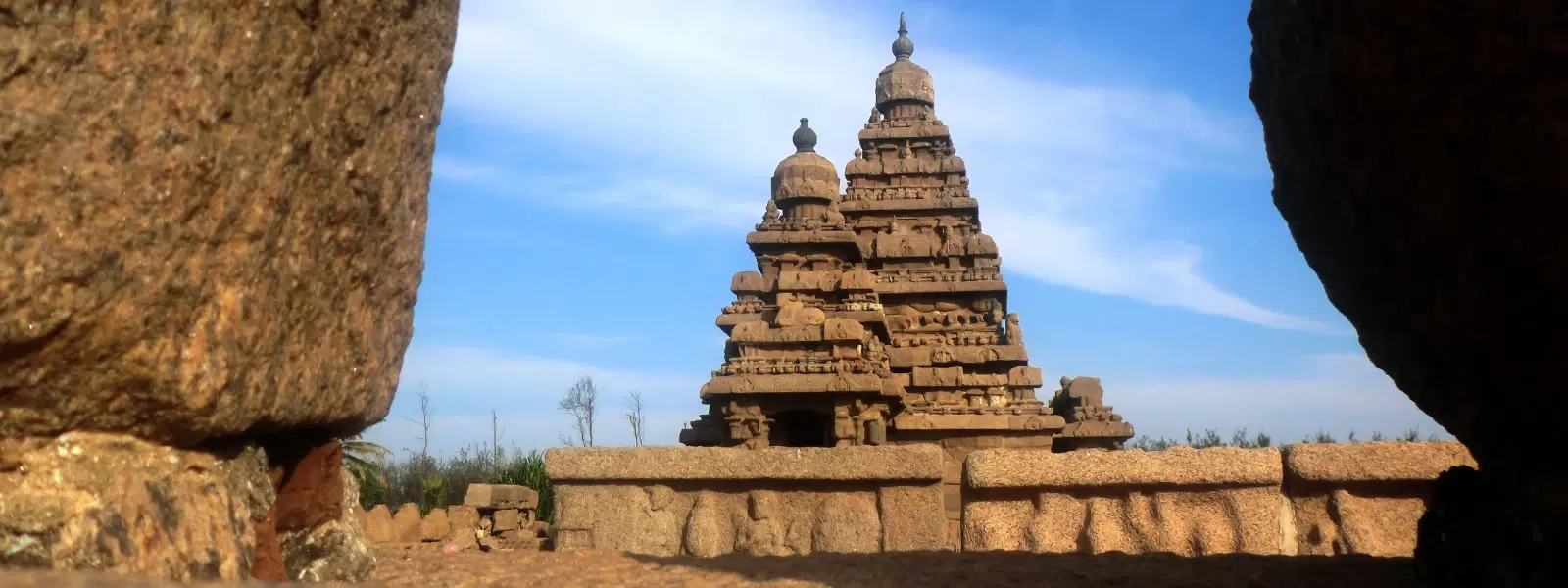
Hotels
•04 min read

Mahabalipuram's underwater ruins have long captivated the hearts of historians, archaeologists, and travelers alike. Hidden beneath the shimmering waves, these submerged temples and structures hold secrets of an ancient civilization and a rich, almost mythical past. In this blog post, you will explore fascinating facts, historical contexts, and groundbreaking discoveries that reveal the mysteries of Mahabalipuram underwater ruins information, deepening your appreciation for this unparalleled Indian heritage site.
Mahabalipuram stands proudly as a UNESCO World Heritage Site, celebrated for its remarkable art and architecture that date back to the Pallava dynasty. The town is a veritable treasure trove of ancient creations, with intricately carved monuments and rock-cut temples that speak of a bygone era. Among these legends lies the tale of the "Seven Pagodas," a narrative that hints at a series of majestic temples, some of which are now believed to have succumbed to the encroaching sea.
Not far from the iconic Shore Temple, underwater explorations have unveiled a series of submerged ruins that shed light on the past. Marine archaeologists, employing advanced techniques like sonar mapping, have begun to piece together the story hidden beneath the waves. This emerging field of underwater archaeology has played a pivotal role in deciphering the architectural and cultural significances of these ancient structures.
The Pallava dynasty, known for its pioneering construction of temples and rock-cut monuments, has left an indelible mark on Mahabalipuram. The intricate designs and technical prowess demonstrated in their constructions are visible both on land and in the submerged ruins. These underwater structures echo the same artistic vision and engineering skill, connecting the present discoveries to the illustrious past of ancient underwater temples India.
The legend of the Seven Pagodas tells of a grand series of temples, with the belief that six have been lost to the sea while only the Shore Temple remains visible to the eye. This fascinating myth has not only added an air of mystery to Mahabalipuram but also spurred countless expeditions aimed at uncovering the truth. For many, it is a blend of myth and history that continues to fuel research into the mysteries of Mahabalipuram ruins.

Recent underwater excavations around Mahabalipuram have uncovered a wealth of submerged artifacts and architectural fragments. Sculptures, stone carvings, and remnants of ancient walls have been identified, offering tangible evidence of the sophisticated craftsmanship of the era. The use of state-of-the-art technologies in underwater archaeology has made it possible to map these ruins with remarkable precision.
The findings from these explorations reveal an astonishing picture of advanced Indian engineering. The submerged temples exhibit precise construction techniques and robust materials that have withstood the test of time. Their design not only highlights the aesthetic excellence of the Pallava dynasty but also underscores their mastery in adapting engineering methods to challenging coastal environments.
One of the most compelling aspects of Mahabalipuram underwater ruins is the mystery of how these architectural marvels ended up beneath the ocean's surface. Some experts suggest that natural disasters like tsunamis or rising sea levels played a significant role, with the 2004 Indian Ocean tsunami even briefly revealing parts of the ruins. Such events highlight the dynamic interplay between human creation and nature's forces.
Despite the progress made in marine archaeology, many questions remain unanswered. Scholars continue to debate the exact purpose of these underwater structures and the full scale of their original forms. These unresolved queries not only add to the allure of the site but also invite further exploration and research into the lost city of Mahabalipuram.
The underwater ruins of Mahabalipuram are more than just submerged relics; they are a living testament to India's rich cultural and historical tapestry. These structures preserve the legacy of the Pallava dynasty and provide crucial insights into ancient Indian artistry and engineering. As a Mahabalipuram heritage site, they continue to enhance our understanding of an era that shaped much of the subcontinent’s history.
Today, these submerged temples have become a focal point for tourism, drawing both history enthusiasts and adventurous travelers. At the same time, conservation efforts are paramount in protecting this vulnerable site. Balancing tourism with sustainable practices is essential to preserving both the ruins and the local cultural landscape. Initiatives aimed at protecting these structures ensure that future generations can continue to marvel at this unique underwater legacy.

Did you know? The legend of the Seven Pagodas has been passed down for generations, captivating imaginations with tales of a lost city swallowed by the sea. Today, marine archaeologists are uncovering evidence that may prove this myth to be more than just a story.
The underwater structures in Mahabalipuram are believed to be remnants of ancient temples and monuments built during the Pallava dynasty, including submerged stone carvings and architectural remains.
The myth of Mahabalipuram revolves around the "Seven Pagodas," a series of temples said to have been partially swallowed by the sea, with only the Shore Temple remaining visible.
The mystery of Mamallapuram lies in its submerged ruins, which spark ongoing debates about their original purpose, construction, and the events that led to their submersion.
Marine archaeologists discovered these ruins through underwater explorations, especially after the 2004 tsunami temporarily exposed parts of the submerged structures.
They are significant for their historical, cultural, and architectural value, offering rare insights into the legacy of the Pallava dynasty and ancient Indian engineering.
Mahabalipuram's underwater ruins are a fascinating blend of history, mythology, and cutting-edge marine archaeology. They offer a unique glimpse into the advanced architectural skills of the Pallava dynasty and continue to inspire both researchers and travelers with their timeless mysteries and cultural significance.